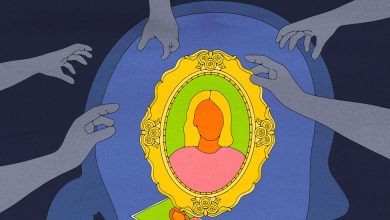‘Porgy and Bess’ Isn’t Black Opera. It’s American Opera.

I didn’t grow up listening to musical theater cast albums. But one of the family LPs often in rotation was something related: the magnificent soundtrack recording from the 1959 film of “Porgy and Bess.” The movie itself doesn’t really hold up, in part because Sidney Poitier and Dorothy Dandridge are so obviously dubbed when they sing. But that’s irrelevant when listening to the recording, where Robert McFerrin (yes, Bobby’s dad) and Adele Addison sounded like deities, and André Previn’s scoring was superb.
When the opera was restored to its original length in 1976 by the Houston Grand Opera, my mother took me to see it when it came through Philadelphia. Eleven though I was, this production shattered me utterly and remains one of the most cathartic theater experiences of my life. For years, however, I retained a sense of “Porgy and Bess” as something majestic but apart.
As in, an unusual experiment, greeted somewhat coolly by critics after it premiered in 1935. They didn’t quite know what to make of a piece written in operatic language but laced with several hummable show tunes and some other things that seemed out of place — perhaps too Black — in the genre typified by “Rigoletto.” As The Times’s Samuel G. Freedman reported at the time of its 50th anniversary, when “Porgy and Bess” debuted:
Black observers also have looked askance at the opera as stereotyping, with its characters living in poverty and its story involving drug abuse and murder, or as inauthentic. The scholars Ray Allen and George P. Cunningham point to a 1936 article in The New York World-Telegram that concludes:
(With an apparent reference to Robert Garland, the World-Telegram’s drama critic.)
Unknown to me in 1976 was that in some cases, producers have had a hard time recruiting top-level Black creatives for “Porgy and Bess” since “many African Americans have found” the opera “to be a kind of Uncle Tomism, a rip-off of black culture” as Itabari Njeri of The Los Angeles Times explained in a 1990 review of the book “The Life and Times of Porgy and Bess: The Story of an American Classic.”
Surely, those critics knew that opera is replete with lead characters who lead less than “respectable” lives or are more vivid than realistic. Their beef seems to be that the only prominent Black opera portrayed characters of this sort rather than the burgherly ones of, say, “Così fan tutte.” But today, at this distance, when the Black experience has been plumbed so much more richly in our arts, we can allow that the “Porgy and Bess” characters are just that, characters, and archetypes of human essence.
In all this, if “Porgy and Bess” is a mere detour from the maturation of American classical music, what represents the through line?
By the end of the 19th century, as America took its place on the world stage, patrons of high art started to ask whether there could be an American variety of classical music, rather than pieces simply imitating what Europeans had already done. Antonín Dvořák, a Czech composer who was doing what we would today call a residency in New York City in the 1890s, called for an American classical music making use of our indigenous musical forms: namely, Native American music and Black music such as the blues, work songs and spirituals. He tried to get the ball rolling with, for example, the Largo theme of his Symphony No. 9, “From the New World,” with its mournful horn solo, intended as summoning a Native American idiom with its construction on the pentatonic scale.
But much of the history of classical music in America has been written as if indigenous American musical forms were ultimately insufficient to form the basis of mature art, such that Dvořák’s call fell largely upon deaf ears. A former music critic for The New York Times, Joseph Horowitz, writes in his new book, “Dvořák’s Prophecy: And the Vexed Fate of Black Classical Music,” that in the first half of the 20th century, a cadre of American composers created American classical music that either held Native American and Black music at an arm’s length or ignored it, mining white folk tunes of the Stephen Foster sort instead.
Hence, the music of Aaron Copland, in works such as “Appalachian Spring,” is often treated as where American classical music went for real, with “Porgy and Bess” often treated as a zesty but idiosyncratic business created by an undertrained upstart. One can love “Porgy and Bess” deeply and yet fall for this perception (note my slightly ashamed use of the third person here).
No more: Horowitz has taught me a new way of processing the timeline of American classical music. If Dvořák’s counsel made sense — that is, if America is to develop a native classical music in the sense that a Bartók used Hungarian folk music to shape his work — then the through line runs directly through “Porgy and Bess.” Taking in the Metropolitan Opera’s fine production a few days ago, I experienced the opera for the first time as an imperious touchstone rather than as a fascinating question.
“Porgy and Bess” gives us orchestral sumptuousness of a degree that must satisfy anyone who loves classical music, as in the music for the hurricane, Wagnerian in its richness, or the soaring orchestral quotation of “They Pass By Singin’.” The scoring often includes savory blue notes a Puccini or Wagner never knew.
But the piece engages Black styles more deeply than this. Gershwin spent time on South Carolina’s barrier islands, including with Gullah-speaking Black South Carolinians, to prepare for writing. The result is an opera with stylized but authentic-sounding food vendor calls, a funeral lament summoning sounds and sentiments unlike what one would write for any white character, a healing sequence invoking the power of Jesus, a furious spoken sequence, “I Hates Yo’ Struttin’ Style,” in which Maria excoriates the drug dealer Sportin’ Life in a way that almost brings to mind a dis track in today’s popular music, and a work song, “It Takes a Long Pull to Get There.”
Amid these marvels, “Porgy and Bess” can feel, at times, messy. You never quite know what’s coming and might wonder whether it all hangs together. But that’s just it: Maybe as an American piece it shouldn’t hang together any more than America ever has. Horowitz cherishes this quality in what he regards as true American art in an eternally hybrid experiment of a nation, charting a commonality between the narratively baggy quality of Mark Twain’s greatest works and the splashy, smashed-up quality of so much of Charles Ives’s work, where despite the stringent classical structure overall, a folk tune can come crashing into the proceedings. Those who saw Copland as the real thing tended to find Ives’s work interesting but somewhat quaint and unfinished. But Horowitz points to Ralph Waldo Emerson’s thought that “in the mud and scum of things, there alway, alway something sings.” That mud and scum, for Emerson, was what we now call authenticity.
Black composers, of course, created truly American classical music of this kind — William Dawson’s smashing “Negro Folk Symphony” is one example. Yet “Porgy and Bess” qualifies, despite its white creators, as a keystone of where truly American classical music had gone by its time, as well as one guide for where it should go. By my reading, there isn’t a single uninteresting bar in the entire score. Every melody is infectious; every harmonization goes beyond functional to gorgeous.
And yet an imperious white critic and composer like Thomson, widely regarded in his day, could hear only something he described as “fidgety accompaniments” and “gefilte-fish orchestration.” Few would echo him today, but the othering essence of this judgment informs the idea that music like Copland’s and Thomson’s, followed by almost willfully ear-challenging work by composers such as Elliott Carter and Milton Babbitt, represents the yellow brick road of American classical music.
Horowitz teaches us to stop hearing “Porgy and Bess” narrowly, as a Black opera, or as some sideline oddity called a folk opera. It is what opera should be in this country, with our history, period. Under this analysis, the scores to Copland’s “Billy the Kid” and “Rodeo,” for all their beauty, are the fascinating but sideline development, not “Porgy and Bess.” Broadway pieces incorporating Black and immigrant musical styles that play plausibly in opera houses, like Kurt Weill and Langston Hughes’s “Street Scene” and Marc Blitzstein’s “Regina,” are less collectors’ oddities than pavers on the path to true American classical music, landing farther from the bull’s-eye than “Porgy and Bess” but worth attending to.
Horowitz has taught me to listen to Black classical music as what the most American of classical music is. His lesson should resound.
Have feedback? Send a note to [email protected].
John McWhorter (@JohnHMcWhorter) is an associate professor of linguistics at Columbia University. He hosts the podcast “Lexicon Valley” and is the author, most recently, of “Woke Racism: How a New Religion Has Betrayed Black America.”





